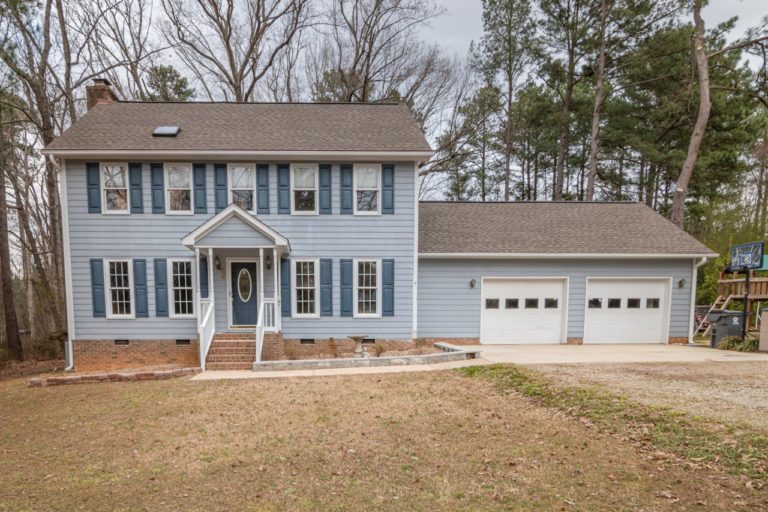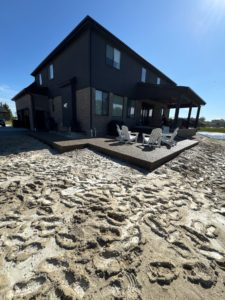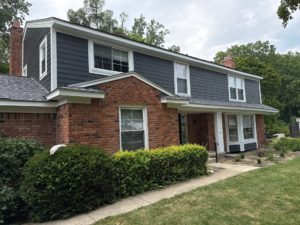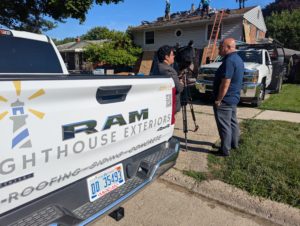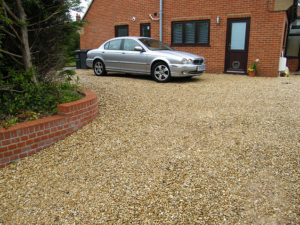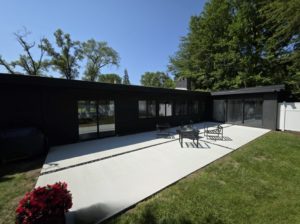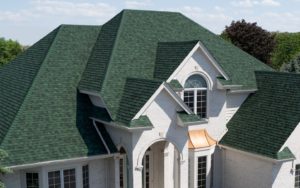Keeping your home’s exterior in top shape is crucial for curb appeal and protection against the elements. Vinyl and James Hardie siding are famous for their durability and attractive appearance. However, even the best siding can show signs of wear and tear over time. Knowing how to repair these issues can save you time and money and keep your home looking its best.
In this article, we will examine common problems in vinyl and Hardie siding, outline the tools and materials you will need for repairs, and provide you with step-by-step guides to carry out these repairs. Whether you’re a DIY enthusiast or just looking to understand the process, this guide will equip you with the knowledge to maintain your home’s exterior efficiently.
Identifying Common Problems in Vinyl and Hardie Siding
Vinyl and James Hardie siding are known for their durability, but several issues that require attention over time can arise. Here are some common problems to look out for:
1. Cracks and Breaks: Heavy impacts from hail, falling branches, or other debris can cause your siding to crack or break. This is more common in vinyl siding but can also affect Hardie siding.
2. Warping and Buckling: Vinyl siding can warp or buckle due to extreme heat or improper installation. Warped or buckled siding looks unsightly and can leave gaps that allow moisture to penetrate.
3. Moisture Damage: Though James Hardie siding is moisture-resistant, it can still be damaged if water seeps behind the panels. Over time, this can lead to mold growth and structural issues.
4. Fading and Discoloration: Prolonged exposure to the sun can cause both vinyl and Hardie siding to fade. While this doesn’t usually affect performance, it can diminish a home’s aesthetic appeal.
5. Loose or Missing Panels: Strong winds or improper installation can cause siding panels to come loose or fall off entirely, exposing the underlying structure of your home to the elements.
Recognizing these problems early can help you take action before they worsen, potentially saving you from more extensive and costly repairs in the future.
Tools and Materials Needed for Siding Repairs
Before you start any siding repairs, gathering the right tools and materials is crucial. Here’s a list of what you’ll need to ensure a smooth repair process:
1. Utility Knife: An essential tool for cutting and trimming siding materials to the correct size.
2. Hammer: Needed for driving nails and removing damaged siding panels.
3. Nails and Screws: Choose the correct type of fasteners specifically designed for vinyl or Hardie siding to ensure a secure fit.
4. Pry Bar: This tool is helpful for gently lifting and removing damaged panels without causing further damage to the surrounding areas.
5. Replacement Siding Panels: Make extra panels that match your existing siding in color and texture. This ensures a seamless repair.
6. Measuring Tape: Accurate measurement is critical to correctly cutting and fitting new siding panels.
7. Caulk and Caulk Gun: Used to seal any gaps and prevent moisture from getting behind the siding panels.
8. Safety Gear: Always wear safety goggles and gloves to protect yourself during the repair process.
9. Ladder: A sturdy ladder will be necessary for reaching higher areas of your siding, especially if you’re working on a multi-story home.
Having these tools and materials ready before you begin will make the repair process more straightforward and less time-consuming. This preparation will help ensure that your siding repairs are effective and long-lasting.
Step-by-Step Guide to Repairing Vinyl Siding
Vinyl siding repairs are straightforward if you follow these steps:
1. Locate and Remove the Damaged Panel: Use a utility knife to score along the length of the damaged panel. Insert a pry bar under the bottom edge to release the panel from the nail hem. Work slowly to avoid damaging the surrounding panels.
2. Cut the Replacement Panel: Measure the gap length left by the removed panel. Cut a new panel to this length using measuring tape and a utility knife. Make sure it matches the rest of your siding.
3. Install the New Panel: Slide the top edge of the new panel into the interlocking lip of the panel above it. Use nails to secure the bottom edge of the new panel, leaving a tiny gap between the nail head and the panel to allow for expansion and contraction.
4. Seal and Finish: Use caulk to seal any joints and ensure watertight protection. Press the bottom edges together to snap the interlocking seams into place, and your vinyl siding repair is complete.
Following these steps will help you repair your vinyl siding efficiently, maintaining your home’s appearance and protection.
Step-by-Step Guide to Repairing James Hardie Siding
Repairing James Hardie siding is a bit more involved but manageable if you follow these steps:
1. Identify and Mark the Damaged Area: Locate the damaged section of the Hardie siding. Use chalk to mark the area you need to remove. Make sure to mark a cutting line that extends into the undamaged portions for a clean fit.
2. Cut Out the Damaged Section: Use a circular saw with a cement blade to cut along the marked lines. Be sure to wear safety goggles and a mask to protect against dust. Remove the damaged piece carefully.
3. Prepare and Cut the Replacement Piece: Measure the gap left by the removed section. Cut a new piece of Hardie siding to fit. Use a circular saw for precision cutting.
4. Install the New Piece: Slide the new Hardie panel into place, aligning it with the existing siding. Secure it with galvanized nails or screws, spacing them according to the manufacturer’s recommendations.
5. Seal and Paint: Apply a coat of exterior-grade caulk around the edges to seal the new panel. Once the caulk is dry, paint the latest piece to match the rest of your siding.
Executing these steps will help you repair your James Hardie siding effectively, ensuring your home remains well-protected and visually appealing.
Conclusion
Maintaining the exterior of your home involves regular inspections and timely repairs, especially regarding siding. Correctly identifying issues and knowing how to address them for vinyl and James Hardie siding ensures your home stays protected from the elements and continues to look great. The right tools and a step-by-step approach can make even complex repairs manageable for any homeowner.
Whether fixing minor cracks or replacing entire sections, these practical tips will help you perform repairs efficiently and effectively. Keeping your siding in top condition enhances your home’s curb appeal and adds to its overall value. No matter what kind of siding you have, regular maintenance and prompt repairs will go a long way in extending its lifespan.
If you need expert help with house siding repairs, don’t hesitate to contact us at Lighthouse Exteriors. Our skilled team is ready to assist you with all your siding needs. Reach out today to ensure your home remains beautiful and strong for years.

